The Best Vietnamese Sandwiches in L.A. Are Made at This Monterey Park Shop
At Bánh Mì Hòa Phát, Ken Hy, an immigrant from Ho Chi Minh City and a longtime SGV resident, knows that right bread is crucial to authentic bánh mì.
Photographs by David Gurzhiev
It’s 7:45 a.m. on a Tuesday, and the phone is ringing off the hook at Bánh Mì Hòa Phát, a six-month-old sandwich shop situated on a side street off N Garfield Avenue in Monterey Park. The owner, Ken Hy, answers calls and punches orders into a POS system. Customers pepper in. A powerful porky waft snakes its way from the kitchen to the compact dining room, with a smattering of tables, a few bar stools, and decorative remnants from the former business, Smokey J. Bakery & Cafe, on the walls. In the back, chef Nhat Hoa Tran shapes French rolls while other back-of-house staff pulls browned hunks of crispy pork from the oven and assembles sandwiches. By 8:30 a.m., three customers are waiting to order, three are waiting for bánh mì, and new faces are walking through the front door every few minutes—a mix of older women, working men, and folks in scrubs from the nearby hospital. As the brazen sound of a cleaver chopping meat reverberates throughout the shop, Hy pours his guests cups of complimentary trà đá (iced tea). Elizabeth, a young woman who lives two blocks away, says she stumbled upon Bánh Mì Hòa Phát shortly after it opened. Now, she comes in twice a week for a crispy pork bánh mì.
This is the first rush hour of the day for the shop that makes L.A.’s best bánh mì. The second is during lunchtime, between 11 a.m. and 1 p.m. “In Vietnam, they eat [bánh mì] at any time, from morning until midnight. Some bánh mì shops are open 24 hours,” says Hy, who immigrated to the San Gabriel Valley with his family from Ho Chi Minh City 20 years ago at the age of 14. He estimates that about 50% of his clientele are Vietnamese and that the majority of the rest are Korean or Chinese. Since opening in June, Bánh Mì Hòa Phát has amassed a devoted regular base. Hy attributes the first wave of customers to the support of Kristie Hang, a reporter and social media influencer who, on Instagram, wrote, “I said what I said. Best Vietnamese sandwich in SGV award goes to Hòa Phát. Say hi if you see me in line cause I know I’m going to be back constantly.”
Bánh Mì Hòa Phát is Hy’s first restaurant. Before, he worked as a salesman for a company that imports Japanese food brands and distributes them to restaurants. But for two decades, he was missing how bánh mì sandwiches tasted in Vietnam. “When I got to the U.S., I couldn’t find any that tasted [the way I was] used to, and I got kind of disappointed,” he says. His main sticking point was the bread. He found that all the shops he visited in Los Angeles and Orange County used long baguettes instead of the squatter French roll customary in Vietnam. “I don’t like when the bread has a lot of filler inside. You eat it, and you get tired, it feels heavy. The way we eat it in Vietnam, the bread is light and crispy and crunchy on the outside. That’s the way it is, how it’s traditional,” Hy says.
He realized that the only way to have authentic Vietnamese bánh mì was to open his own shop. Hy tapped his friend Tran, who also owns a bánh mì shop in Ho Chi Minh City, to be the chef, and together, they planned to bake their own bread, roast their own pork, and make pâté from scratch.
Unlike baguettes, which have a thick crust and a chewy crumb, Tran’s French rolls are light and airy, with a fluffy interior and a beige, shatteringly crisp crust. He makes a few hundred a day and bakes them off throughout service so that they’re always fresh. On its own, the bread is quite bland, which makes it the perfect canvas for bánh mì in flavors like heo quay (crispy pork), đặc biệt (special ham), gà nướng (grilled chicken), xíu mại (meatball), and trứng (egg). Each sandwich gets a swipe of mayo, a smear of pâté, and comes with cilantro; pickled spears of cucumber, carrot, and daikon; and a dressing made of pork belly jus, soy sauce, and fried onions. Their signature sandwich is the crispy pork, a less traditional bánh mì that has been trending on TikTok and YouTube, including in Vietnam (according to Hy).
To make it, Tran lightly cooks pork belly, then marinates it, punches holes into the skin to encourage crisping up in the oven, and roasts it for over two hours. Hy says that 70% of his customers order the crispy pork sandwich. The second most popular is the classic đặc biệt, comprised of four types of meat: pork belly cooked in broth, pork-and-beef meatloaf, head cheese, and a pork cold cut. The sandwiches at Bánh Mì Hòa Phát range from $6 (egg-only) to $7.50 for crispy pork, with most costing just $6.50. “There’s nothing fancy about these sandwiches, it’s just good food paired with good packaging,” says Hy.
Besides the exemplary bánh mì, the other distinguishing factor of Bánh Mì Hòa Phát is their packaging. Each sandwich is served in a branded brown paper box with a rectangle cut out of its top so that any hot steam can be released, deterring the potential of sogginess. For an additional measure of quality control, the pickles are packed in a plastic baggie and the sauce in a lidded ramekin so that customers can finish assembling the sandwiches themselves, whether they’re dining in or taking out. Hy was inspired by the Japanese attention to packaging details and design, which he picked up on while working for his former employer. “In Vietnam, bánh mì is for the working class. They don’t have any packaging; they’re just [wrapped] in old newspapers because people are consuming it right away,” he says. “But to me, it looked kind of cheap. I want something to stand out, to be memorable. That’s why I came up with these boxes… Our sandwiches, you can eat three hours later, and they’re still good.”
One regular comes in once a week and orders five sandwiches to last him five days. (In this case, Hy recommends storing the bánh mì in the fridge and warming them up in a toaster oven for a couple of minutes at 250 degrees.) Another comes in every day at lunch for a crispy pork sandwich, a can of soda, and a cup of fragrant Jasmine iced tea. Hy started serving complimentary trà đá in the summertime so that customers had something refreshing to drink while they waited for their sandwiches. “That’s Vietnamese tradition; when [someone] comes over to your house, you have to greet them with tea. That’s just how it is,” he says. It’s Hy’s way of providing hospitality and showing appreciation for his customers, some of whom come all the way from Santa Clarita and Simi Valley—an hour’s drive for a great bánh mì.
“For our bánh mì, it’s not just a bánh mì. It’s a memory.”
“Honestly, we don’t have much experience opening a restaurant like this,” says Hy. “But you put all your effort into it and just learn from whatever the mistakes are.” Some days the shop has to close early because they’ve sold out of bread at 2 p.m. They’re at their capacity for bread production right now because of their small kitchen, but Hy hopes to find a way to make more so that he can stay open through dinner hours. Eventually, he wants to be able to sell bread wholesale so that more shops can make bánh mì the proper way. “The main thing is the bread. The meat, everyone has their own way of doing it,” he says. Back home, he adds, French rolls are eaten with everything from peanut butter and jelly to The Laughing Cow cheese (and a sprinkle of sugar).
For Hy, the most validating part of the experience is when other Vietnamese immigrants say that the bánh mì tastes like home. “Maybe they [haven’t been back to] the country in a long time, but when they eat here, they have flashbacks, like they were there yesterday.” That he can provide authentic Vietnamese bánh mì in his adopted home of the San Gabriel Valley is immensely gratifying. “I want to let people know this is how in Vietnam we eat bánh mì,” he says. “For our bánh mì, it’s not just a bánh mì. It’s a memory.”



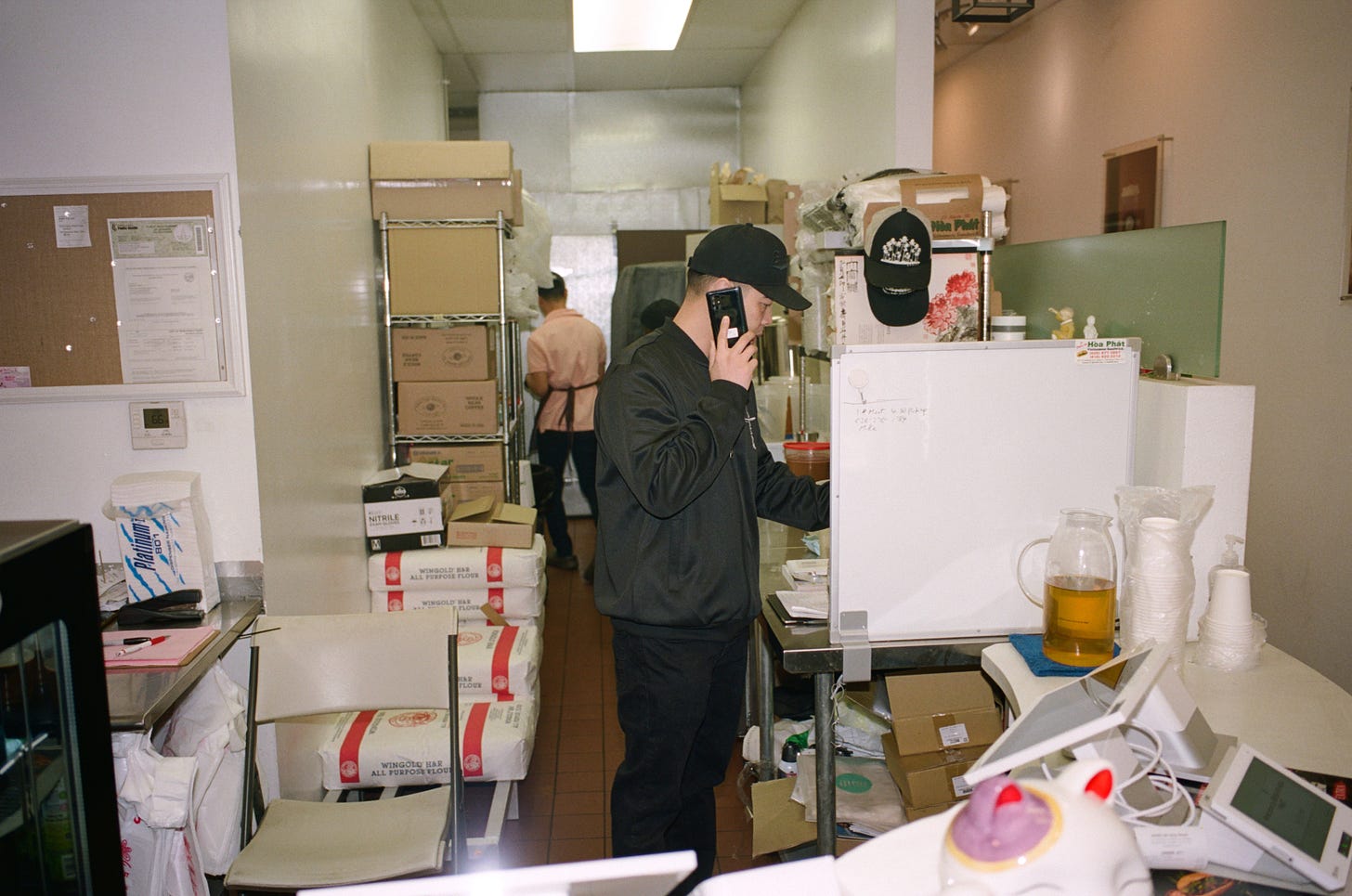
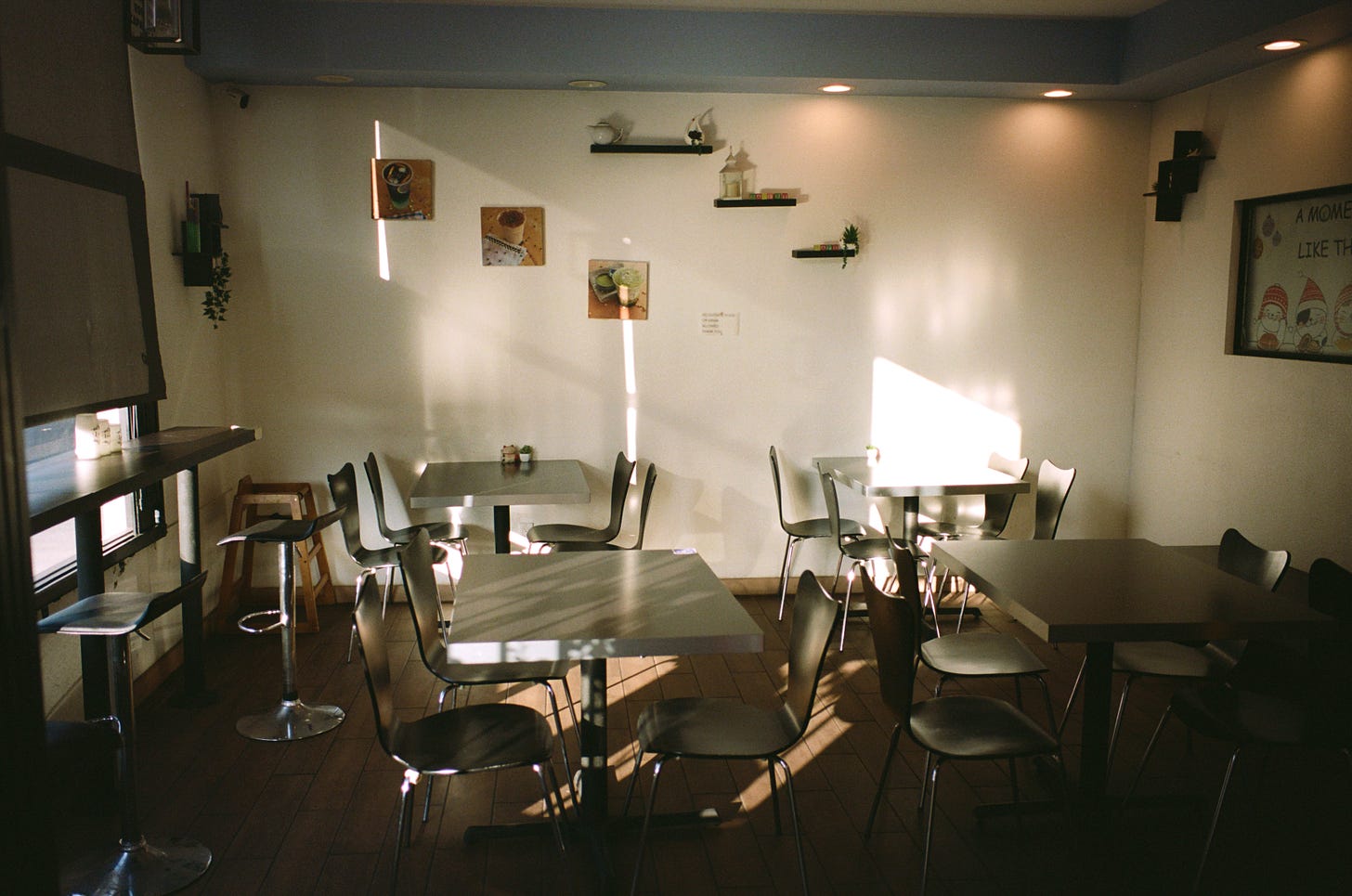



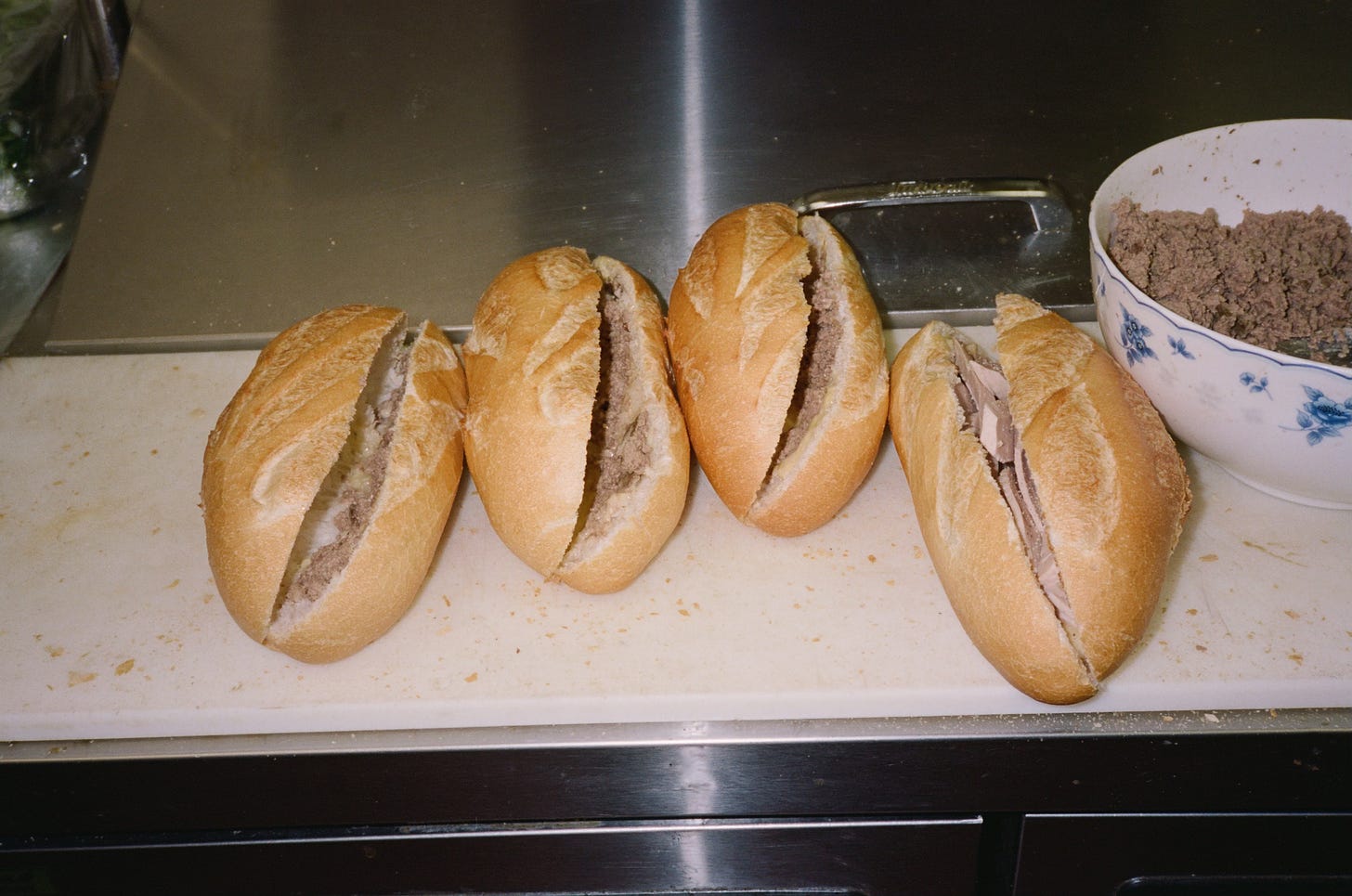

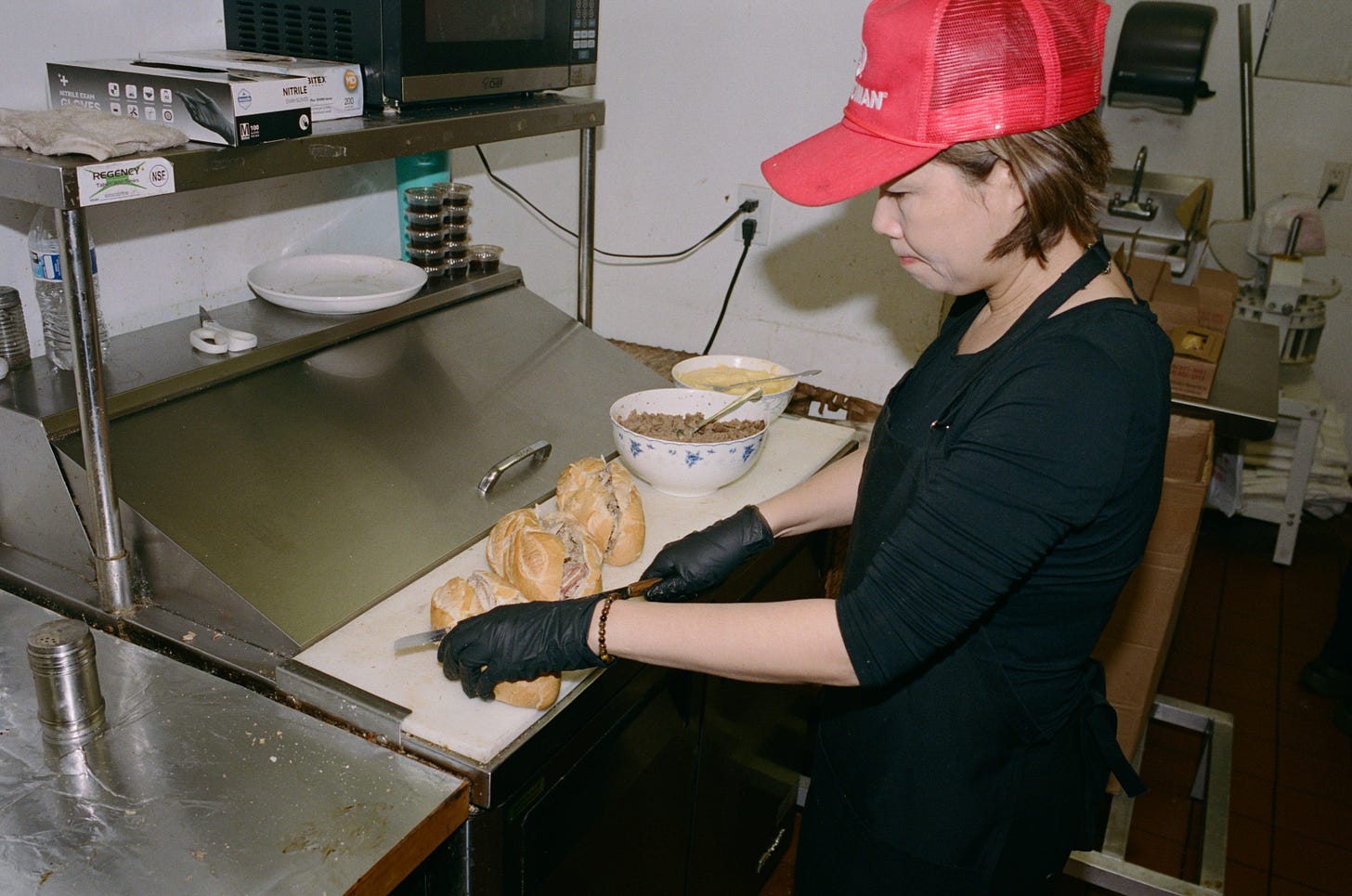


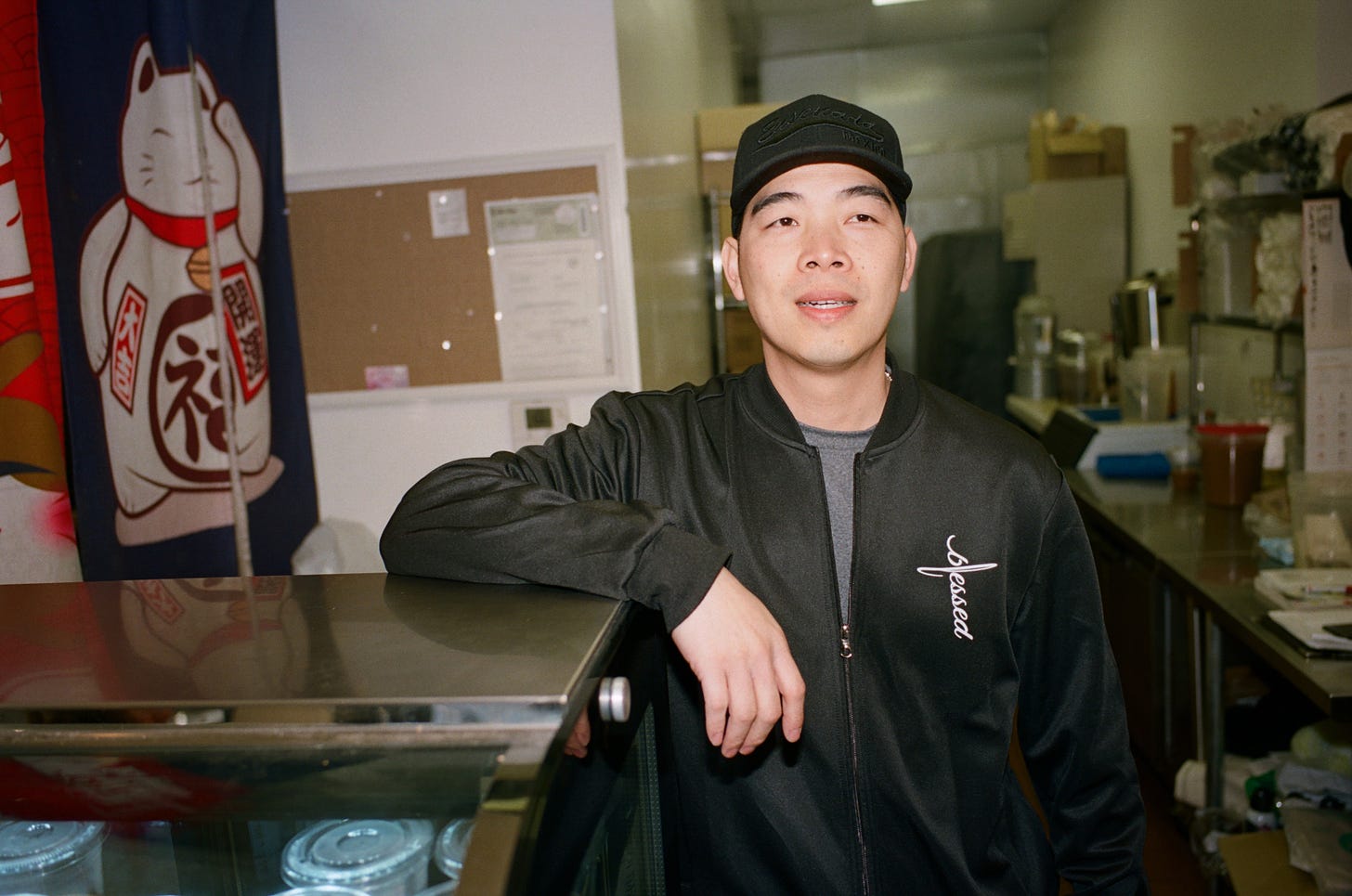
The bread! Whenever someone tells me, “I like banh mi, but I hate cutting up the roof of my mouth,” I tell them they’ve only ever had bad banh mi then.
I’m in the Bay, but the only shops I like and recommend make their own bread. It’s crucial. And I think Americans should set higher standards for their banh mi.
Really enjoyed this piece :)
I am very open to the proposition that the banh mi is *the best sandwich,* bar none.
If I lived within a hundred miles of this place, I would be there *all the time.* 😋
I'm sure my amateur-American homemade versions are ludicrous in comparison, and yet... still pretty fantastic.